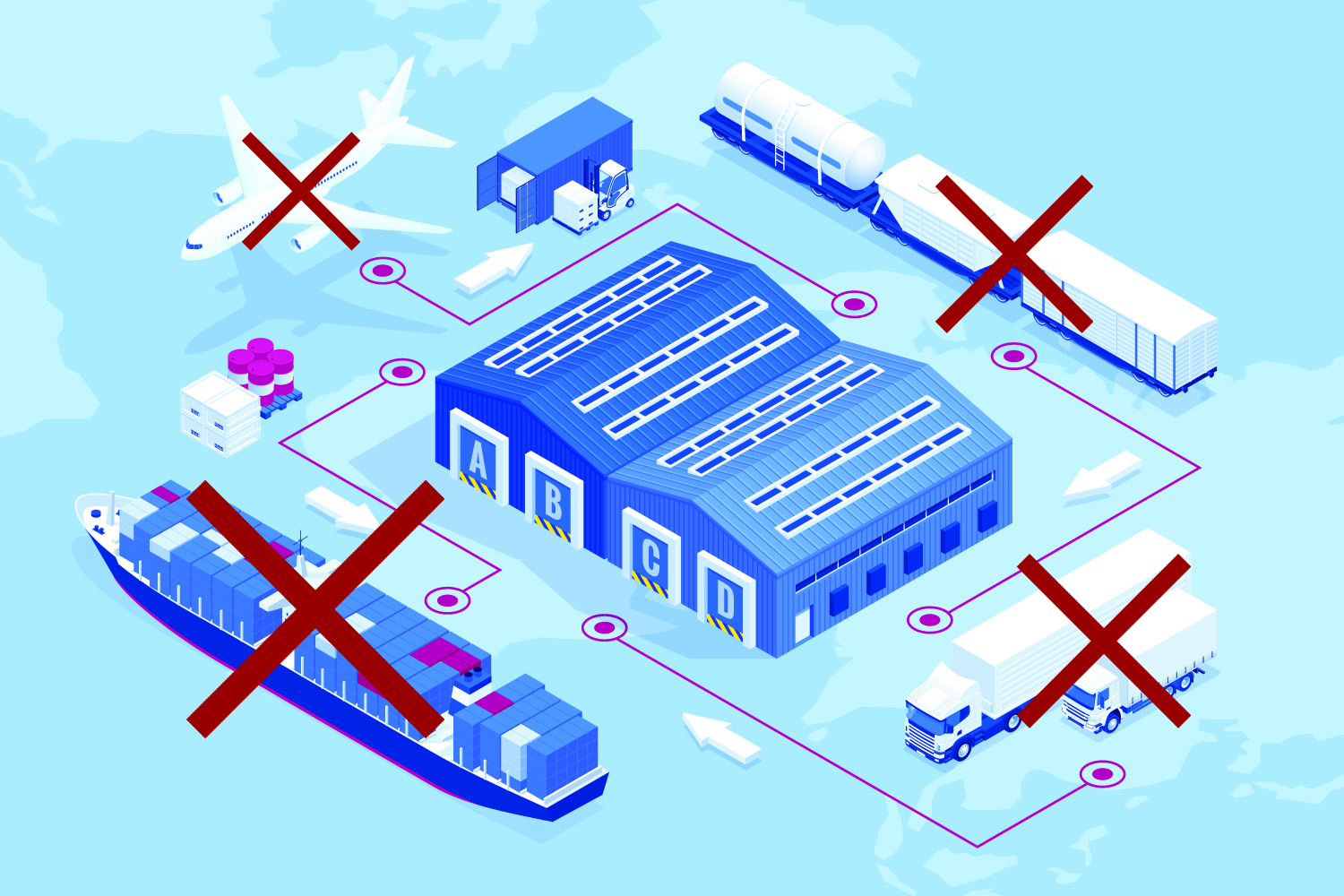Our MD, Nick Allen, shares some thoughts on meeting the supply chain challenges head-on.
Many commentators have recently been discussing the supply chain issues that bedevil the world in the backdraft caused by the COVID-19 pandemic, and it seems as if these issues are likely to precipitate a sea change in the way that many companies do business.

Very early on in the pandemic, in the Spring of 2020, and during the almost global economic shutdown, the vulnerabilities of international supply chains were thrown into vivid relief. It became clear that very many businesses had become accustomed to and reliant on cheap international supply of goods and parts and components exactly in the quantities and at the precise times required to run businesses efficiently. Lockdowns, almost at a stroke, destabilised this structure, which was further compounded by the almost farcical blockage of the Suez Canal earlier this year for six days. This series of events has left many companies more aware than ever that they are massively vulnerable to the vagaries of international supply chain problems.
As a result, conversations around this issue have changed direction. The balance between cheap international yet vulnerable supply chains versus more expensive domestic but more reliable supply chains is beginning to shift. Perhaps the number one priority is no longer cheapest is best, but rather the continuity of supply of products has equal if not greater importance.
Today, the shift towards the latter priority is gathering even more momentum as the prices of goods from China are now rising significantly, eroding yet further the argument for cheap supply of goods. Like the rest of the world, China is struggling in the economic headwinds caused by the COVID-19 pandemic. Power supply issues and costs in China are spiralling (as elsewhere) and this has led to an unprecedented downturn in growth rates, higher inflation, and a general feeling of economic unease.
So, the question left hanging in the air is: if their goods are no longer that cheap, why would anyone chase Chinese supply and expose themselves to international supply chain issues.
At 3DPRINTUK, we see the effects of international supply chain disruption in a couple of ways, one somewhat indirect, and one very direct.

First of all, indirectly, we are obviously working with 3D printing / additive manufacturing technologies, and these technologies play to the ability to localise supply. The nature of the technology means that companies can service the UK market and local customers faster, meaning a shift from mass manufacture in low-cost countries (which as we have seen are becoming increasingly less “low cost”) to domestic supply. In addition, as an “on-demand” production technology, 3D printing reduces the need to transport goods across countries and continents, having a massive impact on warehousing and logistical costs.
All this also plays to the benefits of companies holding digital inventories. At 3DPRINTUK every client has a digital part directory within their account, the key is that 3D printing means that parts can be made on-demand and delivered to customers in any geography from anywhere in the world. Generally speaking, companies do not like to hold large volumes of physical stock. 3D printing of spare parts can cut costs, increase the functionality of parts, add a high degree of flexibility and responsiveness in service, and reduce risks. It also means that spare parts can be printed on demand and can be redesigned batch-to-batch without the need for any tooling. Digital inventory slashes the costs associated with having to hold high physical stocks levels of all spare parts, and also reduces the reliance on international supply chains, meaning spare parts can be printed locally in the numbers required.

Directly, 3DPRINTUK is noticing that a number of companies that previously sourced injection moulded parts from China are now looking for locally 3D printed plastic parts, due to the fact that the costs of injection moulded parts from China are increasing significantly, and also due to the fragile nature of international supply chains as discussed. As an agile technology that can economically supply low to medium volume runs of plastics parts, with a geometric complexity impossible through the use of conventional production technologies, 3D printing is seen as the answer to issues pertaining to cost and supply chain issues for a range of applications.
And finally, is this a temporary fix, a short-term solution to issues in play today, or does this mark a shift in the way that companies will operate longer-term?
The answer is probably somewhere in the middle.
For certain, the pandemic has illuminated issues that have not to date been vigorously scrutinised, and many companies will no doubt stick with the use of domestic 3D printing services into the future. There are now a significant number of companies that have been routinely ordering from sources in China that are now waking up to the attractiveness of using additive manufacturing in the United Kingdom. This trend is reinforced when customers of 3DPRINTUK see how simple digital ordering and repeat ordering is these days, and also as they benefit from the scale of the AM machine infrastructure in-house which means that high levels of demand can be easily accommodated.
The lure of cheap supply will always be there, but pandemic-related supply chain issues have been so disruptive that companies will try to balance cost and security of supply moving forward. After all, pandemic-related health issues are only one — and a relatively uncommon — cause of supply chain uncertainty. The spectre of trade wars and international political and economic disputes is omni-present, and these will inevitably lead to a requirement for secure domestic supply moving forward.
